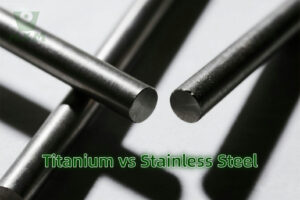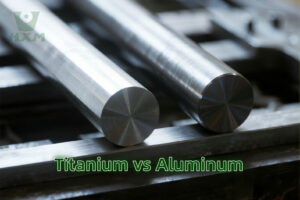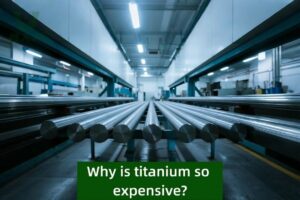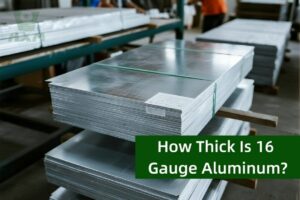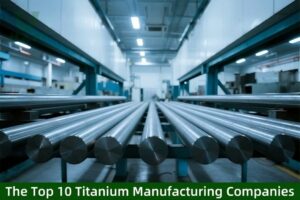When was inconel alloy invented?
- August 15, 2024
- 12:01 am
- 990
The invention of Inconel alloy dates back to the 1930s, when the International Nickel Company (Inco) sought to develop a material capable of withstanding extreme temperatures and corrosive environments. Traditional steel materials performed poorly under these conditions, prompting the need for a new, more resilient alloy to meet the demands of aviation, chemical processing, and energy production industries.
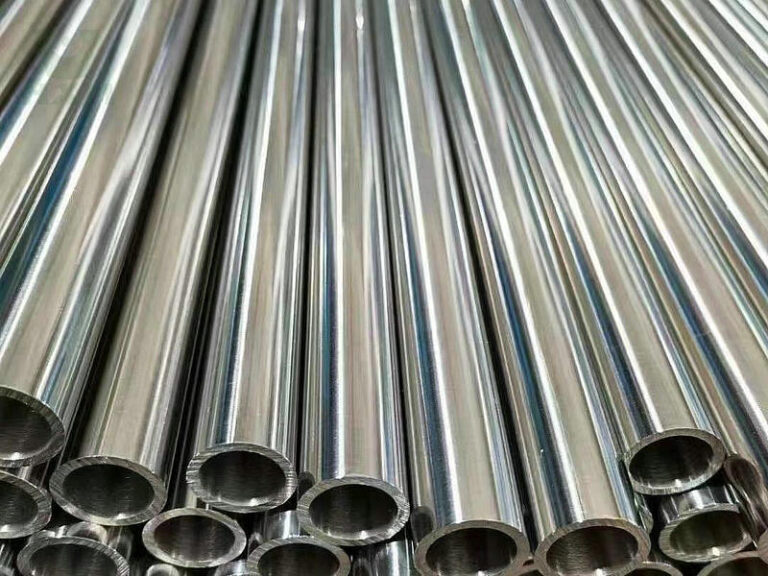
Invention Story of inconel alloy
Inco’s metallurgists successfully developed an alloy based on nickel and chromium and named it Inconel. The earliest Inconel alloy, such as Inconel 600, demonstrated excellent resistance to oxidation and corrosion, leading to its widespread use in high-temperature and corrosive environments.
Major Inconel Grades
Inconel 600:
- Composition: Approximately 72% nickel, 14-17% chromium, 6-10% iron, and minor amounts of other elements.
- Characteristics: Provides good oxidation and corrosion resistance at high temperatures, suitable for use in environments like aerospace engine components and chemical processing equipment.
- Applications: Chemical processing, nuclear industry, aerospace.
- Composition: Approximately 58% nickel, 20-23% chromium, 8-10% molybdenum, 3.15% niobium.
- Characteristics: Offers superior resistance to corrosion, particularly against pitting and crevice corrosion caused by chlorides. Ideal for extreme environments.
- Applications: Aerospace, marine engineering, chemical processing.
Inconel 718:
- Composition: Approximately 50-55% nickel, 17-21% chromium, 4.75-5.5% molybdenum, 0.65-1.15% niobium, and minor amounts of other elements.
- Characteristics: Provides excellent strength and toughness, especially at high temperatures, suitable for high-load engineering applications.
- Applications: Aerospace turbine blades, missile components, nuclear reactor parts.
Inconel 725:
- Composition: Approximately 55% nickel, 20-23% chromium, 4.75-5.5% molybdenum, 0.7-1.15% niobium, and 0.6-0.9% aluminum.
- Characteristics: Delivers higher strength and corrosion resistance, particularly in high-temperature and extreme chemical environments. Suitable for high-strength applications.
- Applications: Oil and gas extraction, chemical equipment, marine engineering.
Inconel X-750:
- Composition: Approximately 70% nickel, 15-17% chromium, 5-7% molybdenum, 0.5-1% niobium, 0.3-0.6% aluminum.
- Characteristics: Features good high-temperature strength and oxidation resistance, particularly useful in heat-treated processes.
- Applications: Aerospace components, gas turbine engines, power generation.
Inconel 230:
- Composition: Approximately 60% nickel, 22% chromium, 8% molybdenum, 1% niobium.
- Characteristics: Offers high strength and oxidation resistance at extreme temperatures, suitable for high-temperature gas turbines and chemical processing equipment.
- Applications: High-temperature gas turbines, chemical processing equipment.
Inconel 783:
- Composition: Approximately 60% nickel, 22% chromium, 8% molybdenum, 2% niobium, 0.7% aluminum.
- Characteristics: Provides high strength and good high-temperature corrosion resistance, particularly useful in high-temperature applications.
- Applications: High-temperature engine components, nuclear reactor internals.
Why Inconel Alloys Were Developed
The development of Inconel alloys was driven by the need to address several challenges:
- High-Temperature Applications: As the performance of aerospace engines and other high-temperature equipment improved, traditional materials could not withstand extreme temperatures. Inconel alloys maintain strength and stability at high temperatures.
- Corrosion Resistance: Chemical processing and energy production environments often involve exposure to strong acids, alkalis, and other corrosive substances. Inconel alloys offer exceptional corrosion resistance, enhancing the durability and reliability of equipment.
- High Strength Requirements: Nuclear reactors and other high-load applications require materials with extremely high strength. Inconel alloys provide the necessary mechanical properties for these demanding applications.
Conclusion
The invention and development of Inconel alloys have significantly advanced industrial technology and materials science. Each grade of Inconel alloy offers unique properties that make it suitable for various applications, including aerospace, chemical processing, and energy production. The diverse range of Inconel alloys meets the needs of different industries, providing solutions to extreme environmental and performance challenges.
Inconel alloys were first developed and used in the 1930s. The initial alloy, Inconel 600, was introduced by the International Nickel Company (Inco) in 1940. It was designed to withstand high temperatures and corrosive environments, which were becoming increasingly important in industrial applications. The first use of Inconel 600 and subsequent grades occurred in aerospace, chemical processing, and nuclear applications due to its superior properties compared to traditional materials.
There are several grades of Inconel alloys, each tailored for specific applications and environmental conditions. Commonly recognized Inconel alloys include:
- Inconel 600: Used for general high-temperature applications.
- Inconel 625: Known for its excellent corrosion resistance, especially in marine environments.
- Inconel 718: Noted for its high strength and resistance to high temperatures.
- Inconel 725: Offers high strength and corrosion resistance, particularly in harsh environments.
- Inconel X-750: Used for high-temperature and high-stress applications.
- Inconel 230: Provides high strength and oxidation resistance at extreme temperatures.
- Inconel 783: Used for high-temperature engine components and nuclear reactor internals.
The exact number of Inconel alloys can vary depending on the classification and inclusion of proprietary or less common grades.
The comparison between Inconel and titanium depends on the specific properties being considered:
- Strength: Inconel alloys generally have higher tensile strength at elevated temperatures compared to titanium. For example, Inconel 718 has superior high-temperature strength compared to standard titanium alloys.
- Temperature Resistance: Inconel alloys can perform well at higher temperatures compared to most titanium alloys, which may lose strength at elevated temperatures.
However, titanium alloys are known for their high strength-to-weight ratio, making them advantageous in applications where weight is a critical factor. In summary, Inconel is generally stronger in high-temperature applications, while titanium offers superior strength-to-weight ratio.
Inconel is highly regarded due to several key properties:
- Corrosion Resistance: Inconel alloys exhibit exceptional resistance to oxidation, pitting, and crevice corrosion, making them ideal for harsh chemical environments.
- High-Temperature Performance: They maintain their strength and stability at elevated temperatures, which is crucial for high-temperature applications like jet engines and gas turbines.
- Mechanical Strength: Inconel alloys offer high tensile strength and good fatigue resistance, which are essential for components subjected to high stresses.
- Versatility: The different grades of Inconel are tailored to meet specific environmental conditions, from general high-temperature use to extreme corrosion resistance.
The suitability of Inconel versus stainless steel depends on the application:
- Corrosion Resistance: Inconel generally provides superior resistance to extreme corrosion compared to standard stainless steel, particularly in highly acidic or high-temperature environments.
- Temperature Tolerance: Inconel alloys can withstand higher temperatures than most stainless steels, making them better suited for high-temperature applications.
- Strength: Inconel alloys often have higher strength at elevated temperatures compared to stainless steel.
However, stainless steel is often more cost-effective and sufficient for many applications where extreme corrosion resistance or high-temperature performance is not critical. Inconel is typically used in more demanding environments where its superior properties are necessary.
While Inconel alloys offer many advantages, they also have some disadvantages:
- Cost: Inconel alloys are significantly more expensive than many other metals and alloys, including stainless steel. This high cost can be a limiting factor for some applications.
- Machining Difficulty: Inconel alloys can be challenging to machine due to their hardness and high strength. Special tools and techniques are often required.
- Weight: Some Inconel alloys can be heavier compared to lighter materials like titanium, which may be a disadvantage in weight-sensitive applications.
- Alloy Sensitivity: The performance of Inconel alloys can be sensitive to precise alloying and processing conditions, requiring strict quality control during production.
Recent Blog
If you found this article good, feel free to share it on your other social media platforms.

